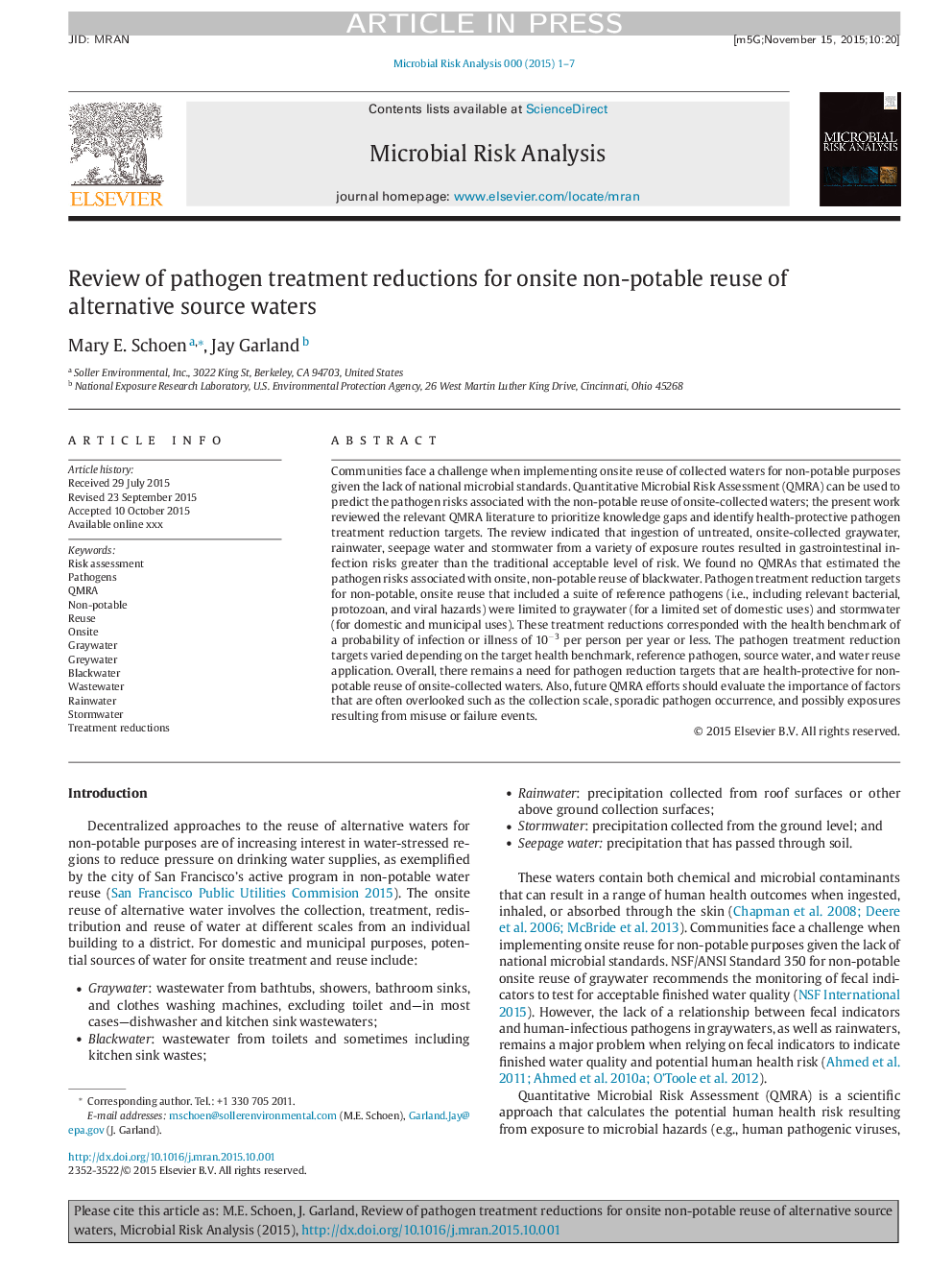| Article ID | Journal | Published Year | Pages | File Type |
|---|---|---|---|---|
| 5739679 | Microbial Risk Analysis | 2017 | 7 Pages |
Abstract
Communities face a challenge when implementing onsite reuse of collected waters for non-potable purposes given the lack of national microbial standards. Quantitative Microbial Risk Assessment (QMRA) can be used to predict the pathogen risks associated with the non-potable reuse of onsite-collected waters; the present work reviewed the relevant QMRA literature to prioritize knowledge gaps and identify health-protective pathogen treatment reduction targets. The review indicated that ingestion of untreated, onsite-collected graywater, rainwater, seepage water and stormwater from a variety of exposure routes resulted in gastrointestinal infection risks greater than the traditional acceptable level of risk. We found no QMRAs that estimated the pathogen risks associated with onsite, non-potable reuse of blackwater. Pathogen treatment reduction targets for non-potable, onsite reuse that included a suite of reference pathogens (i.e., including relevant bacterial, protozoan, and viral hazards) were limited to graywater (for a limited set of domestic uses) and stormwater (for domestic and municipal uses). These treatment reductions corresponded with the health benchmark of a probability of infection or illness of 10â3 per person per year or less. The pathogen treatment reduction targets varied depending on the target health benchmark, reference pathogen, source water, and water reuse application. Overall, there remains a need for pathogen reduction targets that are health-protective for non-potable reuse of onsite-collected waters. Also, future QMRA efforts should evaluate the importance of factors that are often overlooked such as the collection scale, sporadic pathogen occurrence, and possibly exposures resulting from misuse or failure events.
Keywords
Related Topics
Life Sciences
Immunology and Microbiology
Applied Microbiology and Biotechnology
Authors
Mary E. Schoen, Jay Garland,
